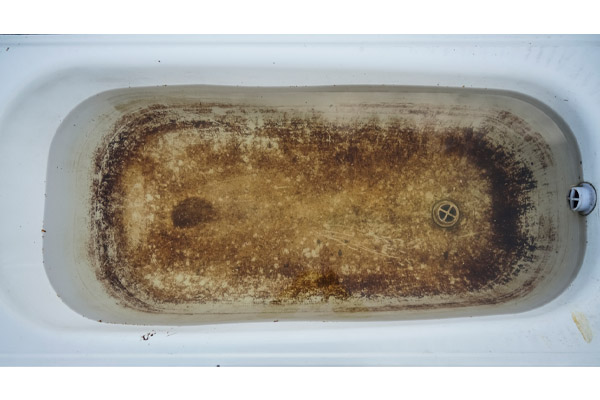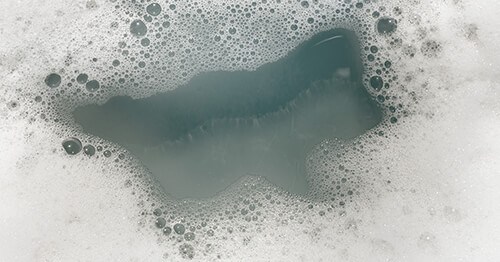Important Factors Behind Discharge in the Bathtub
Important Factors Behind Discharge in the Bathtub
Blog Article
Do you find yourself looking for resources about Why sewage is coming up through your bathtub?

Sewage back-up in the bath tub can be a traumatic and unsanitary trouble for any type of homeowner. Not just is it inconvenient, however it also presents serious health and wellness threats and indicates underlying concerns with the plumbing system. Recognizing why sewer is turning up with the bathtub is vital for taking appropriate action to deal with the problem efficiently.
Introduction to the Problem
Typical Factors for Sewer Backup
Clogs in the Sewer Line
Among one of the most usual sources of sewage back-up is an obstruction in the sewer line. This can take place as a result of the buildup of particles, oil, or international items in the pipelines, protecting against appropriate circulation and causing sewer to support into your bath tub.
Tree Root Intrusion
Tree origins seeking moisture and nutrients can infiltrate sewage system lines with small cracks or joints. Gradually, these roots can grow and increase, triggering significant damages to the pipelines and causing sewer backup problems.
Understanding the Trouble
When sewage draws back up into the tub, it's a clear indication of an issue with the drain system. The wastewater that should be flowing away from your home is rather discovering its back right into your living space, which can bring about considerable damages and health hazards.
Prospective Reasons
Several elements can add to sewage backup in the bath tub. From blockages in the sewage system line to concerns with the plumbing framework, determining the source is necessary for finding an option.
Aging Facilities
Older homes may have dated plumbing systems that are extra prone to corrosion, fractures, and wear and tear. As pipelines age, they end up being more susceptible to leakages and clogs, increasing the possibility of sewer backup cases.
Heavy Rainfall or Flooding
During periods of heavy rainfall or flooding, the sewer system might become overloaded with excess water, causing backups and overflows. This can lead to sewer backing up into tubs and other fixtures inside the home.
Indicators of Sewage Backup
Foul Odors
Unpleasant smells emanating from drains pipes or fixtures, particularly in the bathroom, might indicate sewer backup problems. These smells are usually solid and persistent, indicating a problem that calls for instant focus.
Slow Draining Fixtures
Bathtubs, sinks, and toilets that drain pipes gradually or not at all could be experiencing sewage backup. If numerous fixtures are impacted simultaneously, it's likely that the problem originates from an usual point, such as the main drain line.
Gurgling Sounds
Unusual gurgling or gurgling noises originating from drains when water is running somewhere else in your home are a sign of air trapped in the plumbing system. This air accumulation can result from sewage backup and should be investigated promptly.
Health And Wellness Risks Connected With Sewage Backup
Contamination of Water
Sewage backup can contaminate the supply of water in your home, presenting a significant wellness threat to you and your family. Direct exposure to contaminated water can result in stomach problems, skin infections, and various other health problems.
Mold Growth
Wetness from sewage backup can produce ideal problems for mold and mildew development in your home. Mold spores can exacerbate respiratory system troubles and cause allergies in delicate individuals, making punctual cleaning essential.
Spread of Condition
Sewer consists of unsafe microorganisms, infections, and bloodsuckers that can trigger a series of illness, including liver disease, cholera, and gastroenteritis. Coming into contact with sewer or infected surfaces places you in danger of infection.
Cleaning Up After Sewer Backup
Disinfection Procedures
Thoroughly sanitize and sterilize affected locations after sewer backup to eliminate dangerous germs and stop mold and mildew growth. Use proper cleaning products and protective gear to make sure risk-free and efficient cleanup.
Reconstruction of Affected Areas
Fix any damage to floor covering, wall surfaces, or components caused by sewage back-up. Depending on the extent of the damage, you may require to change carpeting, drywall, or various other materials to restore your home to its pre-loss problem.
Immediate Actions to Take
Turning Off Water Supply
In case of sewage back-up, it's essential to switch off the water to avoid further contamination and damages. Situate the main water shutoff valve in your home and shut it off until the problem can be dealt with.
Getting In Touch With an Expert Plumber
Handling sewage back-up is not a do it yourself job. Contact a certified plumber with experience in dealing with sewage-related concerns to assess the circumstance and execute needed fixings or clean-ups.
Preventing Contact with Polluted Water
Until the sewer backup is fixed, stay clear of contact with polluted water to stop the spread of microorganisms and microorganisms. Use safety equipment if you must remain in the damaged area and wash your hands completely afterward.
Preventive Measures
Normal Upkeep of Drain Lines
Schedule routine assessments and upkeep of your sewer lines to determine and address potential issues prior to they escalate right into major problems. This can include clearing out particles, examining for tree root intrusion, and repairing any type of damaged pipes.
Setting Up Backwater Shutoffs
Take into consideration mounting bayou valves in your plumbing system to stop sewage from receding into your home during durations of heavy rainfall or flooding. These shutoffs instantly close when water starts backing up, shielding your home from contamination.
Correct Disposal of House Waste
Stay clear of purging anything besides bathroom tissue and human waste down the bathroom to prevent obstructions and clogs in the sewer line. Dispose of grease, oil, and other family chemicals appropriately to minimize the risk of plumbing issues.
Why is Sewage Coming Up Through Your Bathtub?
Reasons You May Have Sewage in Your Bathtub
All the drains in your home lead down different pipes to get to the main sewer line. If you’re seeing sewage in the bathtub, the problem is that the main sewer line is clogged up, which is causing the water running through other drains to be pushed back into other pipes. The problem isn’t the bathtub, but the main line. The sewer line can get backed up by anything that goes down the drain, from food waste, hair and soap particles to jewelry or children’s toys. Tree branches or dirt can also impact the sewer line. If you’re seeing sewage in the bathtub, you have a big problem that usually needs a professional plumber. Trying to fix this problem without the right tools or knowledge can lead to bigger plumbing problems.
Fixing a Clogged Sewage Line
Although you shouldn’t try to fix the clogged sewer line on your own, you may be able to mitigate the issue until you can get a plumber to your home. A plunger isn’t going to help, because it won’t be able to reach the sewage drain to unblock the problem.
Turn Off Water
Find the main shutoff valve to your home to turn off the water. This prevents more water from going down the drain which is only going to flow back into your bathtub.
Snake the Toilet and Drain
Start by using a drain pipe snake to clean out the toilet drain. Rotate the snake clockwise when you push the snake down. As you pull it out, the snake should spin counterclockwise. Follow up by snaking out the bathtub drain. If you are successful, both the toilet and shower will drain efficiently. If you’re not successful, you probably have a bigger problem than your tools and experience can manage.
Contact a Professional Plumber
Pros have the tools to find the source of the problem and the experience to manage big blockages without causing more damage to your pipes. It can save you a lot of stress by contacting the professionals sooner rather than later.
Identify the Early Signs of a Clogged Sewage Line
If you’re gearing up for a holiday family gathering or just want to avoid the hassle of a clogged sewage line in your home, make sure you recognize the signs of a clogged sewer line.
Slow drains are a sign of a sewer line problem. Gurgling drains from any drain in your home indicate that you may have an obstruction in the drains. If your toilet keeps getting clogged, it might be a problem with the sewer line. When you see laundry water or water from the dishwasher in different sinks in the home, it’s an indication that your sewer drain is beginning to get backed up. These symptoms can often be “fixed” temporarily to get through a day or week before you start seeing the same problem. When it comes to plumbing problems, you want to fix the root of the problem instead of muddling through. The clog will not go away on its own.
https://handymanconnection.com/mississauga/articles/why-is-sewage-coming-up-through-your-bathtub/

As a person who reads on What To Do If Sewage Starts Backing Up Into the Shower, I think sharing that piece of content was a good idea. Sharing is good. Helping others is fun. We value your readership.
Call Today
Report this page